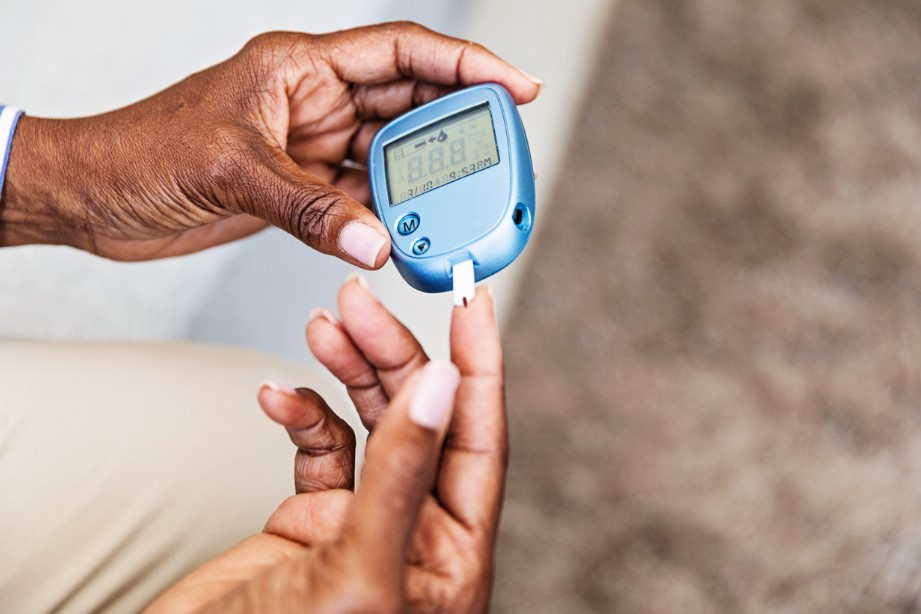
Types of diabetes (Blood Sugar)
Diabetes (Blood Sugar) is one of the diseases that we hear in our daily life. Diabetes is no longer limited to people in their forties. From men and women in their thirties to pregnant women, teenagers and even children are suffering from diabetes. The reason is sometimes hereditary and sometimes uncontrolled lifestyle. Diabetes can be of different types. It is mainly divided into four parts.
Type 1 diabetes (Blood Sugar)

Type 1 diabetes is a type of chronic diabetes. This type of diabetes is also called insulin dependent diabetes. This kind of diabetes happens when the pancreas delivers too little insulin.
Symptoms
However, the type of diabetes cannot be understood without proper testing. Nonetheless, there are a few normal side effects of type 1 diabetes. They are-
A lot of water makes you thirsty
Excessive thirst due to frequent urination is a common symptom of type 1 diabetes. The body tries to eliminate excess sugar through urine, leading to increased fluid loss. This causes a constant feeling of thirst, prompting individuals to drink large amounts of water to quench it.
Frequent fatigue
Frequent fatigue is a symptom often experienced by individuals with type 1 diabetes. The body's inability to utilize glucose effectively leads to energy deprivation, resulting in persistent tiredness and lack of energy. This fatigue may occur despite getting adequate rest, affecting daily activities and overall quality of life.
Weight loss despite hunger
Unexplained weight loss despite increased hunger is a symptom commonly associated with type 1 diabetes. Insufficient insulin production or utilization leads to the body's inability to use glucose for energy, causing it to break down fat and muscle for fuel. This results in unintended weight loss despite a persistent feeling of hunger.
Irregularities are seen in the menstrual cycle of women
Abnormalities in the monthly cycle are seen in ladies with type 1 diabetes. Vacillations in glucose levels can disturb hormonal equilibrium, prompting changes in the timing, length, and power of feminine periods. These irregularities can affect fertility and require medical attention for proper management.
Pain in the lower abdomen
Pain in the lower abdomen is not typically a direct symptom of type 1 diabetes. In any case, uncontrolled diabetes can prompt complexities, for example, diabetic neuropathy or kidney issues, which might cause stomach torment. In the case of encountering such torment, counseling a medical care proficient for precise finding and fitting treatment is significant.
Frequent urination
Frequent urination is a prominent symptom of type 1 diabetes. High blood sugar levels result in excess glucose being eliminated through urine. This leads to increased urine production, causing individuals to urinate more frequently than usual. If accompanied by other diabetes symptoms, it is crucial to seek medical evaluation for proper diagnosis and management.
Required diagnosis
Basically three types of tests are required to be sure about this diabetes. They are urinalysis (albumin, glucose, ketone bodies in the body), fasting blood glucose, HbAUNC (glycosylated hemoglobin) test.
Treatment
Any advanced treatment such as pancreas transplant may be recommended by the doctor. Besides, regular checkup should be done. Also diet modification and lifestyle changes should be done as per the doctor's advice.
Dental Gum Care for Healthy Life
Type 2 diabetes (Blood Sugar)

Type 2 diabetes happens when the insulin delivered in the body doesn't work as expected.
Symptoms
Weight gain
Weight gain can be a symptom of type 2 diabetes. Insulin opposition, a sign of type 2 diabetes, can prompt the collection of fat, especially around the mid-region. Furthermore, vacillations in glucose levels can set off expanded hunger, prompting gorging and resulting weight gain. Managing weight is important in diabetes management.
Heart problems occur
Type 2 diabetes can increase the risk of developing heart problems. Uncontrolled diabetes can prompt high glucose levels, which over the long haul can harm veins and nerves, adding to conditions like coronary illness, stroke, and fringe supply route infection. Proper diabetes management and lifestyle modifications are crucial for reducing this risk.
Feel sick all the time
Feeling sick all the time is not a specific symptom of type 2 diabetes. Notwithstanding, uncontrolled diabetes can prompt long haul difficulties that influence generally speaking wellbeing, for example, nerve harm, kidney issues, and cardiovascular issues, which can bring about a tireless sensation of being unwell. Effective diabetes management is essential for maintaining well-being.
Hungry all the time
Experiencing constant hunger is a symptom of type 2 diabetes. Insulin resistance in the body affects the regulation of blood sugar, leading to elevated levels. This can trigger increased hunger, as the cells are not effectively receiving the glucose they need. Managing blood sugar levels through a balanced diet and medication can help alleviate this symptom.
Difficulty seeing
Difficulty seeing can be a symptom of type 2 diabetes. High glucose levels can cause changes looking like the focal point of the eye, prompting obscured vision or trouble centering. Proper management of blood sugar levels can help improve vision and prevent further eye complications associated with diabetes. Regular eye exams are recommended.
Required diagnosis
In this case, the same tests should be done, which are urine analysis (to understand if there is albumin, glucose, ketone bodies in the body), fasting blood glucose, HBAUNC (glycosylated hemoglobin) test.
Treatment
Keep weight under control. Also follow a regular exercise routine. Keep yourself as stress-free as possible.
What is the cause of dust allergies and how to cure the dust allergy?
Gestational diabetes (Blood Sugar)

Diabetes that occurs during pregnancy is called gestational diabetes. At this time, the body cannot use the blood as before. As a result, the amount of blood sugar increases during this time than normal.
Symptoms
Thirst for water increases a lot
Increased thirst is a common symptom of gestational diabetes. The hormonal changes during pregnancy can affect insulin production and utilization, leading to elevated blood sugar levels. This triggers excessive thirst as the body attempts to flush out excess sugar. Proper monitoring and management of blood sugar levels are important during pregnancy.
Difficulty seeing
Difficulty seeing is not typically a symptom of gestational diabetes. However, hormonal changes during pregnancy can cause temporary fluctuations in vision. If experiencing vision changes or blurred vision, it is important to consult a healthcare professional for proper evaluation, as other factors unrelated to gestational diabetes may be contributing to the issue.
Gets tired soon
Feeling tired or fatigued more quickly than usual can be a symptom of gestational diabetes. The hormonal changes and increased blood sugar levels can affect energy levels during pregnancy. Proper management of blood sugar through diet, exercise, and medical guidance can help alleviate fatigue and promote overall well-being.
Skin, bladder, vagina can be infected
Women with gestational diabetes may be more susceptible to infections in the skin, bladder, and vagina. Elevated blood sugar levels provide an environment conducive to bacterial or fungal growth. Maintaining good blood sugar control, practicing proper hygiene, and seeking medical care for any signs of infection are crucial during pregnancy.
Required diagnosis
Oral glucose tolerance test is very important test during 24 to 28 weeks of pregnancy. Apart from this, blood glucose levels should be monitored regularly from the beginning of pregnancy.
Treatment
First of all, blood sugar control medicine should be taken as advised by the doctor. Also some light exercises like light walking can be done if the doctor allows. Also eat as few calories as possible.
Do you know 7 powerful regular ways of improving sore throat?
Juvenile Diabetes (Blood Sugar)

This diabetes is usually seen in children. In this case, the cells that normally produce insulin are destroyed.
Symptoms
Thirst for water
Excessive thirst is a prominent symptom of juvenile diabetes, also known as type 1 diabetes. The body's powerlessness to create insulin prompts high glucose levels, setting off a consistent sensation of thirst as the body attempts to flush out the overabundance sugar. Regular monitoring and insulin therapy are essential for managing this condition.
Difficulty seeing
Difficulty seeing is not typically a symptom of juvenile diabetes, also known as type 1 diabetes. Be that as it may, ongoing high glucose levels can influence the veins in the eyes, prompting long haul difficulties like diabetic retinopathy. Regular eye exams are important for monitoring and managing any potential vision issues related to diabetes.
Bedwetting in the case of children
Bedwetting, or nocturnal enuresis, can be a symptom of juvenile diabetes, especially in children. High blood sugar levels can result in increased urine production, leading to difficulties in bladder control during sleep. If bedwetting persists or is accompanied by other symptoms, a medical evaluation is recommended for proper diagnosis and management.
Vomiting
Regurgitating can be a side effect of adolescent diabetes, otherwise called type 1 diabetes. At the point when glucose levels become perilously high (hyperglycemia), it can prompt a condition called diabetic ketoacidosis (DKA), which can cause sickness and spewing. Immediate medical attention is crucial in such cases to prevent further complications.
Excessive hunger
Excessive hunger, known as polyphagia, is a common symptom of juvenile diabetes (type 1 diabetes). Insufficient insulin production or utilization prevents glucose from entering cells for energy, leading to increased hunger as the body craves more fuel. Proper insulin management and blood sugar control are essential for managing this symptom.
Required diagnosis
Check blood glucose levels regularly. Along with that, different activities of the child have to be monitored.
Treatment
If necessary, you can inject insulin with doctor's advice. It is also necessary to exercise regularly and follow a diet chart.
Conclusion
Diabetes presents a range of symptoms that include excessive thirst, difficulty seeing (due to long-term complications), bedwetting in children, vomiting (in cases of diabetic ketoacidosis), and excessive hunger. Recognizing these symptoms is crucial for early detection and proper management. Timely medical evaluation, blood sugar monitoring, insulin therapy, and lifestyle adjustments are essential in effectively managing juvenile diabetes and maintaining optimal health and well-being.
Do you know the symptoms, prevention, treatment, and diagnosis of hepatitis B?
Read More Articles
Instagram Twitter Facebook LinkedIn Quora Google News
Our Other Engagements:


https://livewithgreen.com/blood-sugar-types-and-treatments/
.jpg)